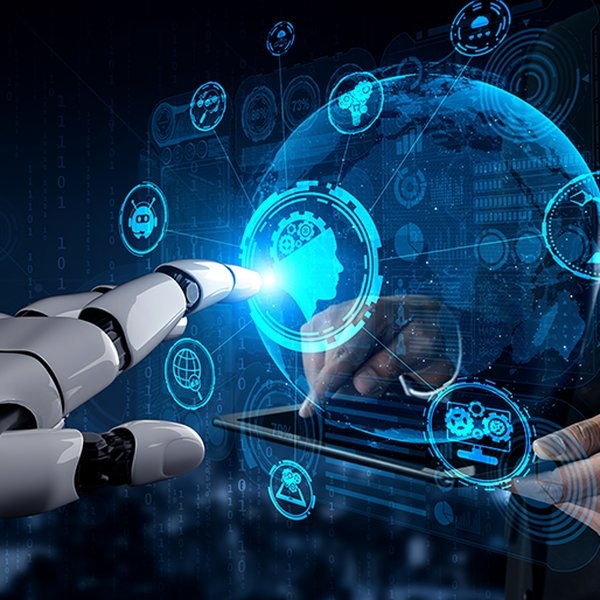
As AI-powered automation becomes a cornerstone of digital transformation in 2025, AI agent frameworks are increasingly powering intelligent workflows, decision-making systems, and self-operating applications. These frameworks enable autonomous agents to perceive, reason, learn, and act—making them critical for organizations seeking to scale operations through intelligent systems.
However, choosing the right framework is a complex decision. It involves weighing performance benchmarks, scalability potential, and real-world adaptability across domains like customer service, cybersecurity, robotics, and enterprise automation.
This article dives deep into the current AI agent framework landscape, comparing the top players in terms of architecture, capability, use cases, and future-readiness.
Understanding AI Agent Frameworks in 2025
AI agent frameworks are platforms or toolkits that help developers design, train, and deploy autonomous agents capable of sensing environments, making decisions, and executing actions based on goals or stimuli.
These frameworks typically include:
Modular architectures for defining perception, planning, and action loops.
Integration with LLMs (like GPT-4.5 and Claude) or symbolic reasoning engines.
Reinforcement learning modules, memory structures, and prompt chaining.
Multi-agent orchestration for complex workflows.
As of 2025, modern agent frameworks are optimized for both single-agent systems (task-focused) and multi-agent ecosystems (collaborative or adversarial tasks).
Key Evaluation Criteria
Before diving into specific frameworks, let’s define the three primary criteria for comparison:
1. Performance
Measures how quickly and effectively agents respond to tasks. Includes:
Decision latency
Context-switching speed
Efficiency in long-horizon tasks
2. Scalability
Reflects how well the framework supports larger deployments:
Multi-agent orchestration
Distributed computation
Integration with enterprise stacks and cloud-native environments
3. Real-World Usability
Assesses the maturity of use cases:
Real deployments in business or research
Flexibility across domains (e.g., finance, healthcare, e-commerce)
Developer ecosystem and documentation
Top AI Agent Frameworks in 2025: A Comparative Breakdown
🔹 1. LangChain Agents
Overview: LangChain remains a dominant player for LLM-integrated workflows. It enables agents to chain prompts, tools, and memory into autonomous reasoning systems.
Performance: Optimized for LLMs like OpenAI GPT and Anthropic Claude. Works best with inference tasks, search, and decision trees.
Scalability: Modular tool integrations, but limited in multi-agent environments. Works well in serverless deployments.
Real-World Use: Popular in chatbots, customer support automation, RAG systems, and business intelligence tasks.
Ideal for: Rapid prototyping of reasoning chains and integrating with existing SaaS tools.
🔹 2. AutoGen by Microsoft
Overview: AutoGen enables the orchestration of multi-agent conversations to perform tasks collectively. It focuses on collaboration and structured dialogue.
Performance: High response precision due to multi-turn coordination. Slightly slower due to agent interaction overhead.
Scalability: Built for distributed execution and enterprise integration. Supports parallel agent deployment.
Real-World Use: Deployed in financial advisory simulations, legal AI workflows, and AI task forces.
Ideal for: Multi-agent scenarios like collaborative research, co-writing, and business process simulation.
🔹 3. CrewAI
Overview: CrewAI is gaining traction as a lightweight, intuitive framework to manage teams of specialized agents ("crew members") that execute workflows together.
Performance: Optimized for task delegation. Execution time depends on agent complexity.
Scalability: Modular architecture supports increasing team size. Less performant in data-heavy tasks.
Real-World Use: Frequently used in HR automation, marketing analytics, and product prototyping workflows.
Ideal for: Businesses wanting structured AI workflows without heavy infra dependencies.
🔹 4. SuperAGI
Overview: An open-source framework with a full agent lifecycle stack, SuperAGI supports auto-pilot agents, vector DB memory, and dynamic planning.
Performance: Robust in long-horizon task planning and feedback loops.
Scalability: Supports Kubernetes-based scaling, cloud-native deployments.
Real-World Use: Used in DevOps automation, agent-as-a-service platforms, and autonomous R&D tools.
Ideal for: Developers needing deep customization and hosting control.
🔹 5. Haystack Agents (deepset)
Overview: Originally an NLP framework, Haystack added agent support in 2024, focusing on research and document-heavy use cases with deep retrieval and LLM orchestration.
Performance: Strong in document querying, analysis, and retrieval-augmented generation.
Scalability: Integrates with Elasticsearch, OpenSearch, and Kubernetes for scalable workflows.
Real-World Use: Deployed in legal tech, academic research assistants, and compliance workflows.
Ideal for: Enterprises focused on document-intensive processes.
Performance Benchmarks: 2025 Snapshot
Framework | Decision Latency | Multi-Agent Support | Tool Ecosystem | Dev Learning Curve |
|---|---|---|---|---|
LangChain | ⚡ Fast | ❌ Limited | 🔧 Extensive | 🟢 Easy |
AutoGen | ⏱️ Medium | ✅ Excellent | ⚒️ Growing | 🟡 Moderate |
CrewAI | ⚡ Fast | ✅ Good | 🛠️ Modular | 🟢 Easy |
SuperAGI | ⏱️ Medium | ✅ Excellent | 🔩 Deep | 🔴 High |
Haystack | ⏱️ Medium | ✅ Moderate | 📚 RAG-Focused | 🟡 Moderate |
Real-World Use Cases in 2025
🔸 Healthcare
CrewAI and AutoGen power autonomous triage assistants and insurance workflow bots.
Haystack Agents used for clinical trial document analysis.
🔸 Finance
SuperAGI deployed in algorithmic trading backtesting and compliance.
AutoGen supports multi-agent negotiation in investment planning.
🔸 Retail & E-Commerce
LangChain Agents integrated with chatbots, recommendation engines, and trend forecasting tools.
CrewAI coordinates marketing automation and lead nurturing.
🔸 Software Development
SuperAGI and AutoGen facilitate code generation, QA testing, and backlog grooming.
Challenges & Considerations in 2025
Despite advancements, AI agent frameworks face hurdles:
Hallucinations and errors in autonomous decision-making
Tool fatigue — too many similar frameworks with overlapping features
Security risks — agents exposed to external APIs or tools can be exploited
Data privacy — agents acting on user data must comply with global regulations (e.g., GDPR, CCPA)
Choosing a framework in 2025 depends not just on technical capability, but on organizational readiness, infrastructure maturity, and internal expertise.
Conclusion: What Should You Choose?
There’s no one-size-fits-all framework. Here’s a brief recommendation:
If You Need... | Choose This |
|---|---|
LLM-based task chains | LangChain |
Multi-agent conversation | AutoGen |
Workflow teams with simple UX | CrewAI |
Customizable agents at scale | SuperAGI |
Document-based knowledge workflows | Haystack |
AI agent frameworks in 2025 are maturing quickly. The right choice can supercharge your organization’s efficiency, automate decision-heavy processes, and create new value streams—all with fewer manual interventions. But success depends on strategic evaluation, real-world testing, and a keen eye on performance and scale.
